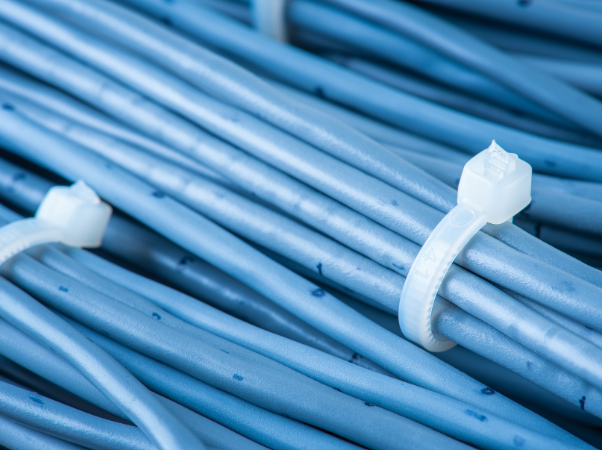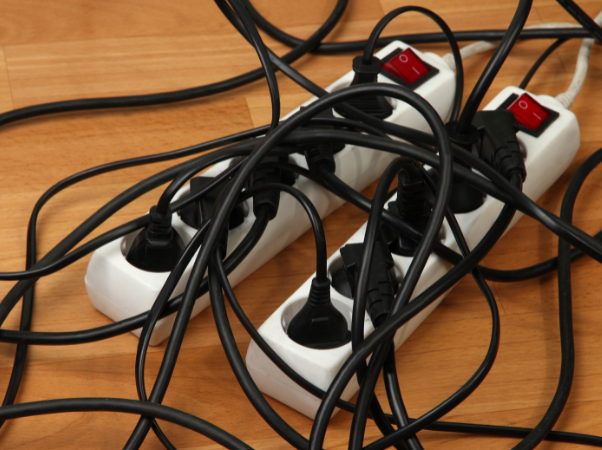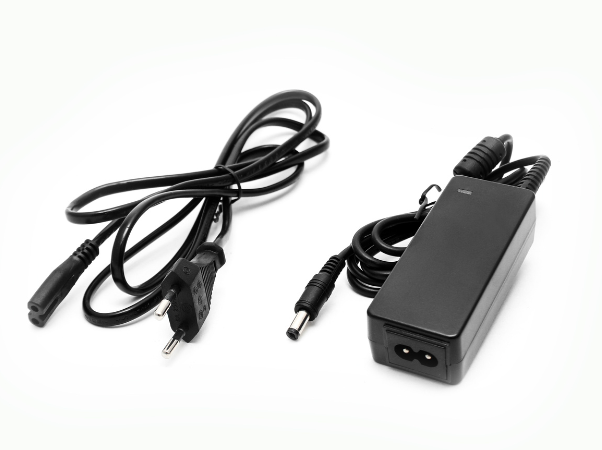With working from home becoming the new norm for many of us, as we settle into our new working routines it's important to remember that health and safety should always remain a top priority.
And, when it comes to electrical safety, it’s one particular area that shouldn’t be overlooked. This is especially so as we’re more likely to be using electronics constantly at home, compared to when working in an office setting.
Those in the trade are perfectly placed to offer crucial electrical safety advice for remote and home workers. Here, we discuss several safety tips to help improve the home working environment.
Working From Home Health and Safety
Self-assessment of the home is crucial for those working from or at home as it helps identify potential safety hazards and ergonomic issues that may lead to work-related injuries and health problems.
By taking adequate time to evaluate the home workspace, it’s possible to make necessary adjustments to improve overall comfort, productivity, and well-being. This applies to anyone who uses the home for work, regardless of whether they work full-time, part-time, or remotely.
Carrying out simple safety measures goes a long way towards improving overall health. This includes ensuring proper lighting is used in the area, checking and updating safety equipment, and optimising cable management for devices.
By prioritising self-assessment, individuals can enjoy a safe and supportive work environment that promotes success in their everyday work life.

6 Home Working Electrical Safety Tips
1. Maintain Good Cable Management
Cable management has many benefits that improve the organisation and safety of a home workspace.
There are many advantages to managing the cables from electrical devices. Not only does it tidy up those tangled cables and keep devices functioning, but it can have a significant impact on cooling the area. In turn, this improves airflow that may have been restricted by messy cable placements.
Additionally, efficient cable management can also reduce signal interference. It also reduces the time for cable changes in the event of an error that needs maintenance or troubleshooting.
Overall, this can create a more productive and focused environment, as well as make a positive impression on colleagues who visit your workspace. Yet, it's just one crucial step in maintaining a safe, efficient, and visually appealing work area.
Alongside appliance cable management, tradespeople are expected to maintain proper organisation of internal wiring that adheres to safety requirements when performing any sort of household electrical work.

2. Install Security Cameras
Making good use of CCTV and surveillance Systems is an excellent way to safeguard home workspaces and help ward off trespassers who may approach the home. This is particularly beneficial when homeowners have to occasionally commute to an office. A reputable security camera system offers assurance that the home is protected when left unoccupied.
3. Ensure Good Power Management
Power management is another important tip for improving electrical safety at home. Fuses are used to protect the cable rather than the appliance and are considered the deliberate weak link in a circuit. These can blow if an electrical device or extension draws too much electrical current due to either an overload or a fault.
Extension leads are an excellent way to make electricity readily available for unreachable areas and let workers use multiple devices all in one go. Extensions are a must when working from home as they can be hooked up to the devices needed all from the one wall socket.
Most extension leads are typically power surge protected, however, it’s important to avoid overloading them and refrain from plugging one extension into another, referred to as daisy chaining, as this can cause fires.

4. Install Smoke Alarms
Did you know that most fires at home start accidentally?
The effects of a fire in the home can be utterly devastating. So, using a fire detection system can be a saving grace as it provides homeowners with an early warning sign in the event of a fire, giving them enough time to take action.
A smoke alarm is a home necessity for keeping both electrical devices safe and, of course, the people living in the home. Yet, it’s especially important for those working from home, as sadly, you can't rule out the possibility that an electrical device could become faulty and potentially run the risk of causing a fire.
5. Use the Correct Chargers
Our phone and laptop chargers are among some of the biggest causes of house fires! So, it’s essential when working from home to check the right ones are being used.
If the voltage of these chargers is too low, they won't generate enough voltage to charge the battery and take longer to charge. But more worryingly, issues here can cause devices to overheat or even burn.
When replacing a charger, it should always be the recommended charger for the product and bought from a trusted supplier. With lots of fakes on the market to watch out for, those cheap chargers can leave a home open to fire risks.

6. PAT Test All Home Working Equipment
A PAT test is a standard inspection of electrical work appliances set by many employers in the workplace. This checks all appliances are safe and secure to use. A full PAT test typically includes both a visual inspection and a more in-depth assessment by using specialist PAT testing equipment to prevent electrical accidents, checking plugs, equipment, and wall sockets
Yet, for those working from the home, employer health and safety responsibilities remain the same. So, a PAT test still needs to be carried out to make sure any electrical equipment is safe.
Damaged and faulty electrical equipment can pose a severe risk of fire and electrical shocks. Therefore, the best way to make sure any appliance used in the home that relates to work is safe is to get it Portable Appliance Tested (PAT).
Signs of wear and tear include:
- Scorch marks around a plug or appliance
- Damaged or frayed leads
- Hot plastic or burning smell
- Smoke or sparks coming from a plug or appliance
- Insulation or bare wires visible on a plug or appliance
- Damaged casing on an appliance
- Damaged plug
- Blown fuses for no apparent reason
- Melted plastic on the appliance leads
Homeowners should be encouraged to spot anything that looks dangerous, and then stop using it immediately before reporting it.

City Plumbing Can Help Customers Create Safer Work Environments
Whether it's from an office room, a desk in the corner, or a spot at the dining room table, 50% of the working population across the UK now work from home.
Yet, though it may be a more comfortable environment for many, it doesn't mean everyone is free from risk. In fact, more accidents happen in the home than anywhere else.
For those working this way, carrying out a risk assessment for working from home can help identify any potential hazards that need the assistance of a tradesperson.
If you’re a qualified installer, learn more about how you can make homeowners feel more secure while working from home.
At City Plumbing, we stock a wide range of electrical and lighting equipment to help you keep safe while around electrical devices. If you require further assistance, contact us or visit your local City Plumbing branch.
Other articles

Help Customers Make The Move To Smart Living
02 Nov 2023 ・ 4 mins

Don't miss the B.U.S… Boiler Upgrade Scheme Grant Increased for 2024
13 Oct 2023 ・ 5 mins

A Trade Guide to Infrared Panel Heaters
10 Oct 2023 ・ 5 mins

Helping Installers Transition their Business
29 Sep 2023 ・ 4 mins



